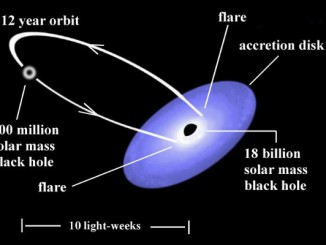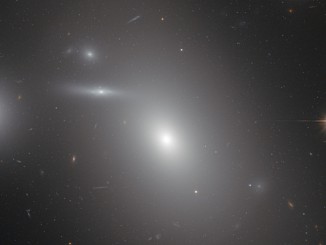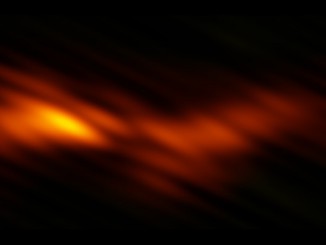
Hubble views face-on spiral galaxy NGC 6814
In this NASA/ESA Hubble Space Telescope image we see the striking face-on spiral galaxy NGC 6814, whose luminous nucleus and spectacular sweeping arms are rippled with an intricate pattern of dark dust. The galaxy was discovered by William Herschel in 1788. NGC 6814 lies 74.4 million light-years away in the constellation of Aquila.









